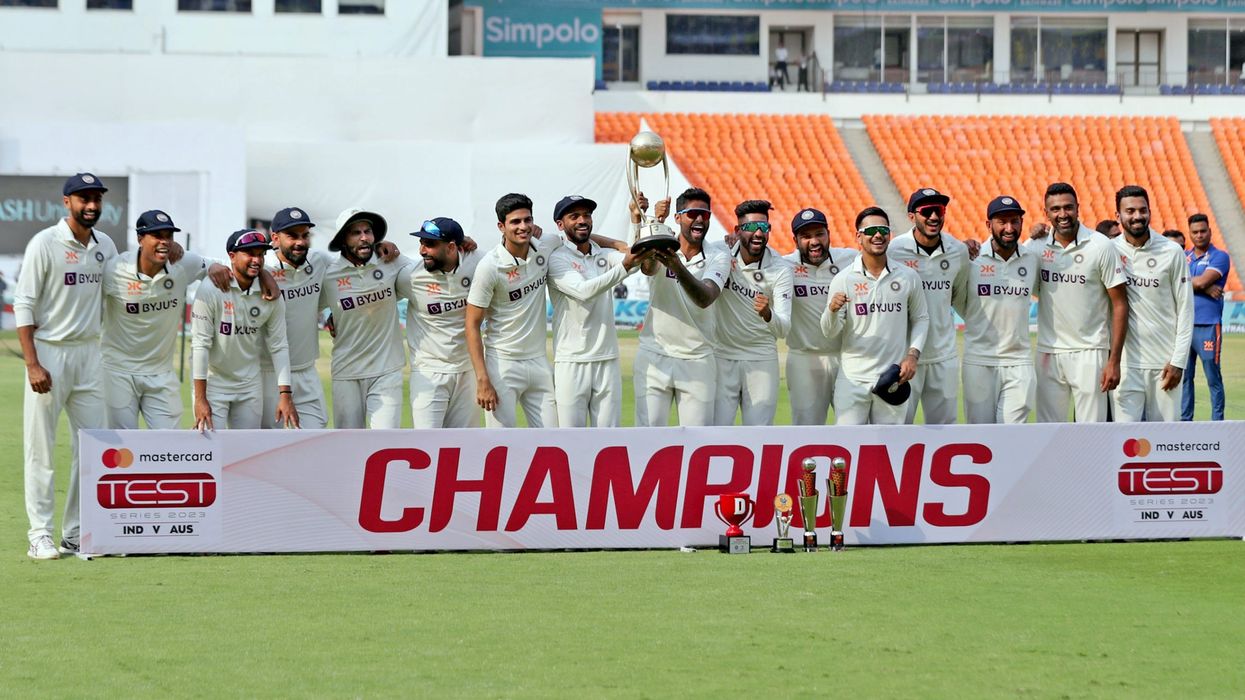India clinched their fourth consecutive series victory over Australia, with the fourth and final Test, headlined by an impressive 186-run performance by Virat Kohli, ending in a draw.
The Rohit Sharma-led team reached the ICC World Test Championship decider after New Zealand secured a thrilling last-ball win over Sri Lanka earlier in the day.
It will be India's second successive WTC final, having lost the inaugural edition to New Zealand in 2021.
Australia reached 175-2 in their second innings in the final session of play at the world's biggest cricket stadium when the players of both teams called it a day.
India similarly lifted the Border-Gavaskar Trophy at home in 2017 and then beat the Australians in their own back yard in 2018-19 and 2020-21, each time 2-1.
Travis Head (90) and Marnus Labuschagne (63 not out) snuffed out India's push for a victory on the final day with a stand of 139 after nightwatchman Matthew Kuhnemann fell early for six.
Regular opener Usman Khawaja did not to bat due to "lower leg soreness" after getting hurt while fielding on day four.
The match in Ahmedabad belonged though to Kohli, who hit a masterful knock on day four to end a Test century drought of 1,205 days since his previous ton.
The marathon 364-ball knock blocked every chance of a potential defeat for the hosts after Australia posted 480 on a vastly different pitch from the previous three Tests.
Kohli recorded his 28th Test century to power India to 571 all out on Sunday as India managed a lead of 91 after their first innings.
Kohli's partnership of 162 for the sixth wicket with Axar, who hit his third half-century of the series with an attacking 79, marked India's dominance on Sunday.
Indian spinner Ravichandran Ashwin excelled with his six wickets in Australia's first innings, in a run-filled match which was at odds with the first three Tests.
Ashwin managed 25 wickets in the series, ahead of Ravindra Jadeja's 22, as the spin duo received the player-of-the-series award jointly.
(AFP)












